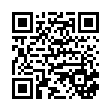Hand Injury (PDF)
File information
Title: CTS June 2006
Author: Paul
This PDF 1.4 document has been generated by Adobe PageMaker 7.0 / 3-Heights(TM) PDF Optimization Shell 4.6.19.0 (http://www.pdf-tools.com), and has been sent on pdf-archive.com on 30/11/2015 at 11:14, from IP address 58.7.x.x.
The current document download page has been viewed 389 times.
File size: 93.1 KB (2 pages).
Privacy: public file


File preview
HI
PAUL JARRETT
ORTHOPAEDIC SURGEON
Post-operative recovery
In significant hand injuries, operations
may sometimes be extensive with
considerable therapy and aftercare
required; often further operations are
required to treat the injury. Following the
majority of hand injuries, and unless
advised otherwise it is best that the
hand is elevated in a sling during the
day and pillows during the night to
reduce swelling. This reduces pain and
will decrease stiffness and ultimately
provide an improved result. Despite
good medical treatment, hand therapy
and dedication from yourself,
particularly in more severe injuries, the
degree of recovery can be
unpredictable.
Hand
Upper Limb
Orthopaedic Trauma
Your Guide to
Hand Injuries
Follow up appointments and hand
therapy are often required.
Best wishes for a
good recovery.
PAUL JARRETT
ORTHOPAEDIC AND HAND SURGEON
Murdoch Orthopaedic Clinic
100 Murdoch Drive
Murdoch WA 6150
tendon repair
Phone: 08 9311 4636
Fax: 08 9311 4627
E–mail: admin@pauljarrett.info
pauljarrett.info
GUIDE TO HAND INJURIES
What is happening in my wrist to cause carpal tunnel syndrome?
Introduction
Structures that can be injured
The hand is a delicate and finely crafted
piece of equipment designed to perform
many extremely important functions
within our life.There are many accidents
or injuries that can injure the hand causing
reduced hand function and pain. It is
important that as a patient not only the
best form of medical care is undertaken
but also that following care by the patient
and therapists is carried out effectively.
Skin – some small skin injuries may heal with no or
minimal treatment. More major skin injuries may
require suturing or more major reconstructive
procedures including the use of skin grafts or flaps.
Wounds often require to be washed out to reduce the
risk of infection
Following a hand injury many structures
within the hand may be injured. These
structures include the skin, ligaments,
tendons, bones, nerves and blood
vessels. It may be difficult to assess which
if any of these structures are injured and
what the significance of these injuries are.
It is important that should the injury be
more than small or if in doubt, that an
appropriate qualified medical practitioner
assesses your injury and directs treatment
where required.
Ligaments – some minor ligament injuries require
no treatment and will recover spontaneously. Others
may require hand therapy to regain motion or
splintage to allow healing of the ligament injury.
Some ligaments injuries require surgical repair or
reconstruction.
Tendons – the majority of tendon injuries will require
surgical repair, careful splintage and hand therapy to
reach maximum recovery following the injury. Should
careful care not be undertaken then stiffness, tendon
rupture or lack of function may be the end result.
Bones – hand fractures can more often be treated
with taping, splintage or plaster casts. This may
require expert application of these techniques and
monitoring of progress. Some hand fractures will
require operative treatment. It is important that hand
fractures are assessed and treated by an appropriate
qualified medical practitioner and therapists.
Nerves – nerves in the hand are more often injured
after wounds in the hand occur. Should nerve injury
be suspected or possible then wounds require
surgical exploration and the nerves repaired.
Nerves once repaired do not function immediately
and will take months to years to regain their maximal
recovery. In addition, injured nerves never fully
recover with amount of recovery dependant upon
factors including the type of injury and age of the
patient.
fracture on arthroscopy
Blood vessels – blood vessels may be
injured in the hand.This will cause
bleeding and sometimes pressure effects
in the hand. Significant blood vessel injury
often requires surgical exploration and
repair. The repair of blood vessels can clot
off and therefore some patients will
require to be monitored in hospital for
some days and may require further
surgery in the event of problems.
Treatment options
The treatment of hand injuries must be
individualized to each patient and each
injury. X-rays and sometimes other
investigations are sometimes required
prior commencing your treatment.
Treatment may not be require or may
consist of a splint, or plaster casts or an
operation(s). The full extent of the injury
will often not be clear until the time of
surgery. I will advise you of the options
available to you and the relative
advantages and disadvantages
(including major risks) of each treatment
to help you decide upon the correct
approach for your own hand.
You will often require medications
following your injury for pain relief and
sometimes antibiotics.
Download Hand Injury
Hand_Injury.pdf (PDF, 93.1 KB)
Download PDF
Share this file on social networks
Link to this page
Permanent link
Use the permanent link to the download page to share your document on Facebook, Twitter, LinkedIn, or directly with a contact by e-Mail, Messenger, Whatsapp, Line..
Short link
Use the short link to share your document on Twitter or by text message (SMS)
HTML Code
Copy the following HTML code to share your document on a Website or Blog
QR Code to this page

This file has been shared publicly by a user of PDF Archive.
Document ID: 0000318280.